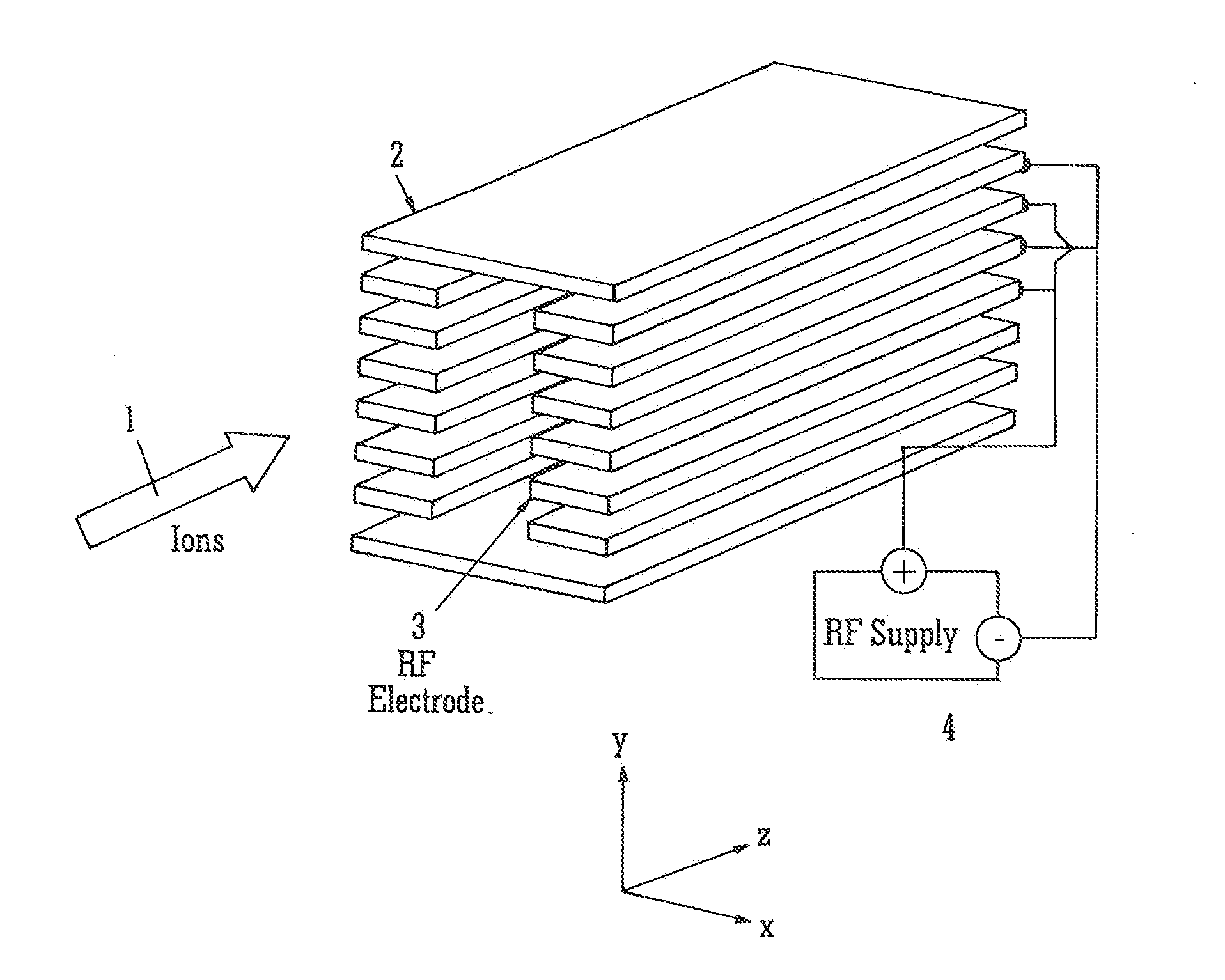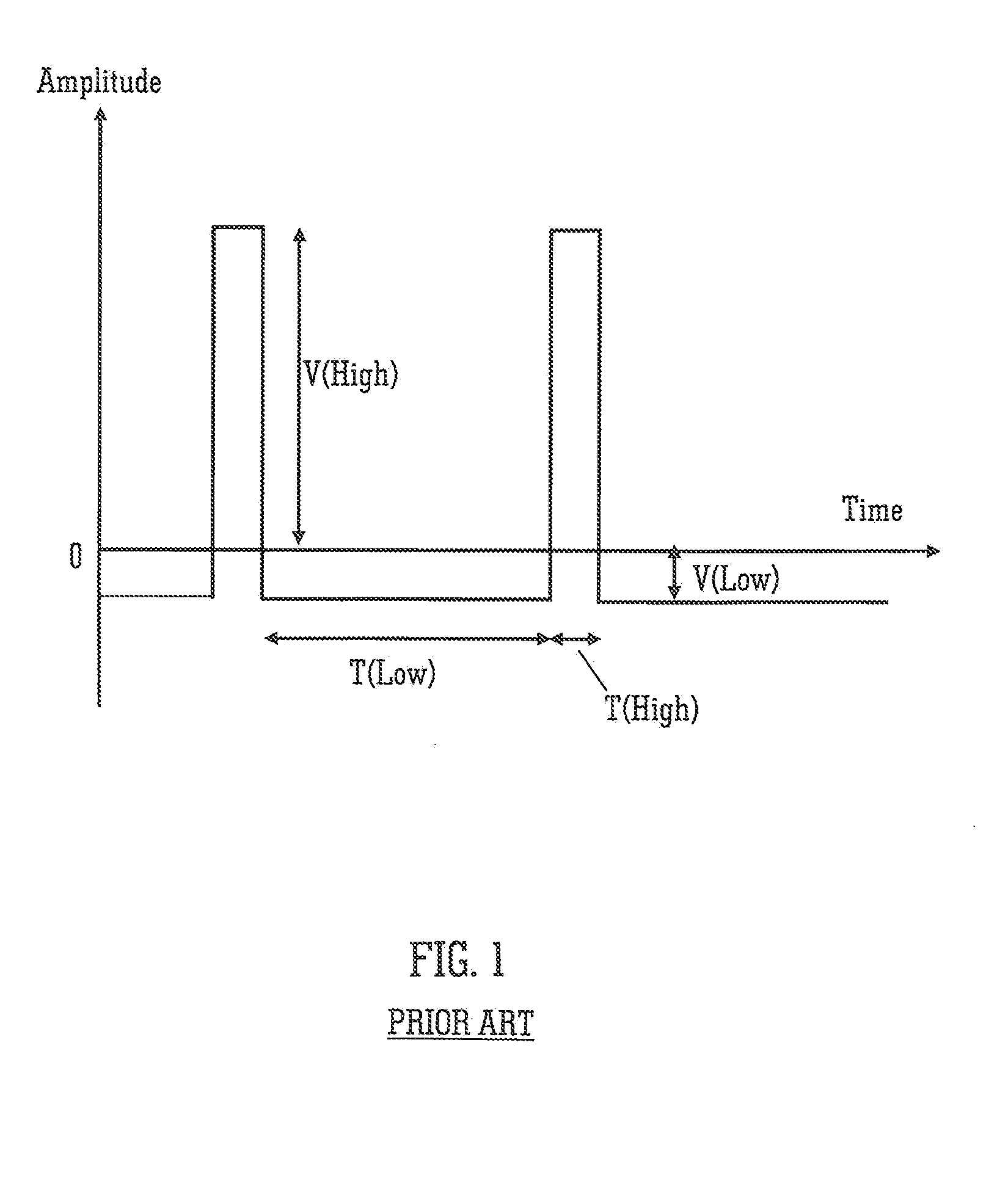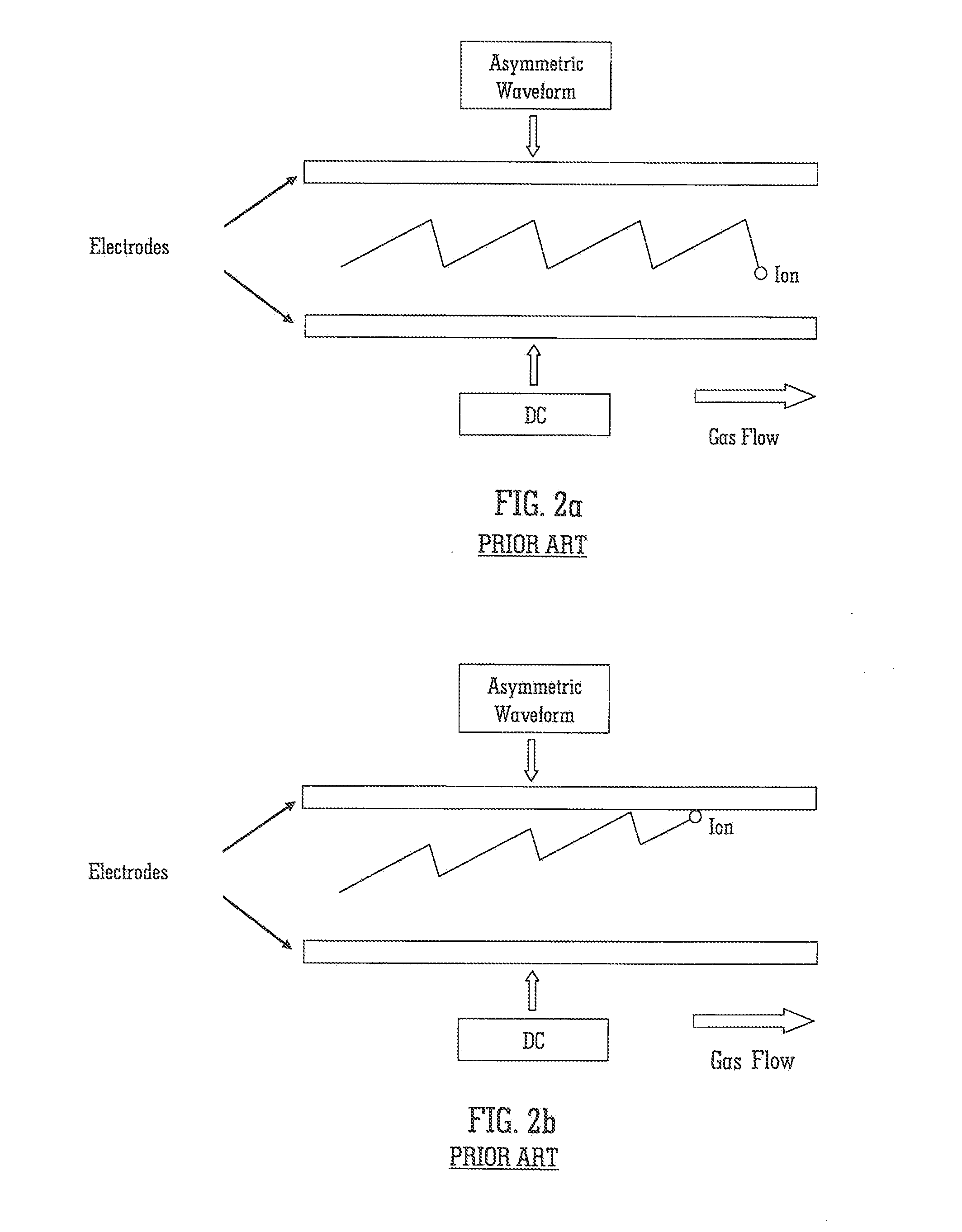Asymmetric Field Ion Mobility in a Linear Geometry Ion Trap
a linear geometry and ion trap technology, applied in the field of mass spectrometry, can solve the problems of ion diffusion being lost, ion not being transmitted, etc., and achieving the effect of low duty cycle for transmission of analytes, ion diffusion becoming a significant loss mechanism, and ion diffusion becoming a loss mechanism
- Summary
- Abstract
- Description
- Claims
- Application Information
AI Technical Summary
Benefits of technology
Problems solved by technology
Method used
Image
Examples
Embodiment Construction
[0093]FIG. 1 shows a known asymmetric potential difference which may be applied between the plates of a known ion mobility separator in order to separate ions according to their differential ion mobility. The product of voltagetime is arranged to be the same for the low and high field sections of the wave. Consequently, if the low and high field mobility of an ion species are the same then the average trajectory of an ion will be parallel to the plates and the ion will be transmitted through the device as shown in FIG. 2A. However, if the low and high field mobilities differ, then the ion will drift towards one or other of the plates and be lost to the system as shown in FIG. 2B. Through application of a DC voltage to one plate it is possible to compensate for any mobility-induced drift and to allow transmission of ions having a desired differential ion mobility.
[0094]A preferred embodiment of the present invention will now be described with reference to FIG. 3. A stacked plate ion ...
PUM
 Login to View More
Login to View More Abstract
Description
Claims
Application Information
 Login to View More
Login to View More - R&D
- Intellectual Property
- Life Sciences
- Materials
- Tech Scout
- Unparalleled Data Quality
- Higher Quality Content
- 60% Fewer Hallucinations
Browse by: Latest US Patents, China's latest patents, Technical Efficacy Thesaurus, Application Domain, Technology Topic, Popular Technical Reports.
© 2025 PatSnap. All rights reserved.Legal|Privacy policy|Modern Slavery Act Transparency Statement|Sitemap|About US| Contact US: help@patsnap.com



